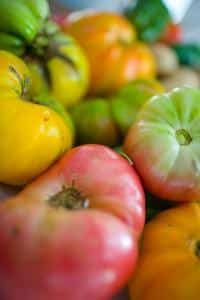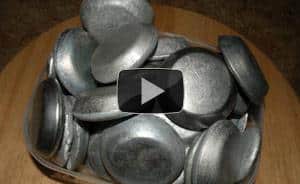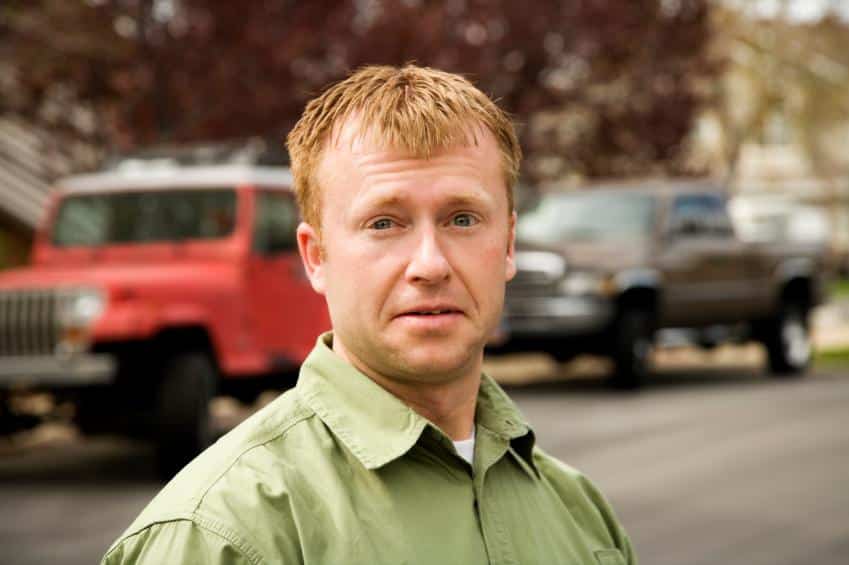 Growing rare and endangered plants is a rewarding experience that allows us gardeners to take on our role as stewards of the land. This stewardship can be taken a step even further as some gardeners choose to use their skills to help keep a rare heirloom variety or even an endangered plant species from disappearing forever.
Growing rare and endangered plants is a rewarding experience that allows us gardeners to take on our role as stewards of the land. This stewardship can be taken a step even further as some gardeners choose to use their skills to help keep a rare heirloom variety or even an endangered plant species from disappearing forever.
Benefits
Self-Sufficiency: Rather than depending on garden centers or seed catalogues every year to grow your own food, you can harvest and re-sow native plants and heirloom varieties directly from your garden. These plants differ from hybrids by producing viable seeds that grow into true-to-type plants that are just like previous generations. In addition, these plants are perfectly suited to growing in their native region and often require little additional water or pampering to stay healthy. Many heirlooms are also resistant to local pests and diseases.
Increased Diversity: A diverse range of resident plant species and varieties increases the garden’s overall health and acts as a buffer to disease and pest outbreaks. Growing several different species and varieties with your vegetable garden can mean the difference between minor damage and complete crop failure.
Preserving cultural heritage: Many heirloom crops and native plants are living remnants of history. Rare native plants often have medicinal value, while some heirlooms have been grown for over 100 years. Finding out the story behind heirlooms can be a fun and educational experience. Some were developed during the Great Depression, while others were brought to the U.S. by early immigrants.
Increased Variety: Native flowers and heirloom vegetable varieties add a touch of unique color, taste, and beauty to your home. Heirlooms can come in a much wider range of colors, shapes, and tastes than more traditional or modern hybrids, and have a way of brightening up both the garden and the dinner plate.
Growing Threatened or Endangered Species
Endangered or threatened species, including both plants and animals, are given special legal protection. It is forbidden, for example, to pick, harass, or even collect seeds from an endangered plant on public land. It is also forbidden to sell or trade an endangered species. Acquiring and growing a threatened or endangered plant requires permission and can be difficult to achieve, but is possible through some non-profit and university programs.
Growing native species that aren’t yet officially protected but whose numbers are dwindling are a little easier to acquire, and they may be available through some reputable nurseries. Whether officially protected or not, only seek out plants that are lawfully propagated and be sure to heed laws concerning collecting wild plants and seeds.
Get more nutrition and no GMOs with heirloom variety seeds from Heirloom Solutions!
Growing Rare Heirlooms
Heirlooms are cultivated varieties within a species, and when rare or nearing extinction, are not offered any official protection like endangered plant species. Instead, they are left to quietly fade away. Many of these rare heirlooms are a living remnant of early U.S. history and have been in cultivation for generations.
Story continues below video
Growing and developing heirloom varieties is an ancient tradition going back to the beginning of agriculture. The huge amount of diversity from countless cultivars in different regions and climates produced crops that could thrive in a wide range of conditions and resist certain diseases and pests for a more robust food supply. At the turn of the twentieth century in the U.S., this diversity was still very much apparent, but now 100 years later, is almost nonexistent.
The modern agriculture techniques of monoculture, sterile hybrids, and GMOs have led to a crash in the diversity of our food and increased risk to the U.S. food system. Many irreplaceable varieties of staples like corn and potatoes are in danger of disappearing entirely. A study done in 1983 illustrated this by comparing the USDA’s available varieties of vegetables in 1903 to 1983, and the results were sobering. In only 80 years, more than 400 available tomato varieties were reduced to less than eighty, while sweet corn cultivars went from over 300 available to only a dozen.
Luckily for modern gardeners, some of these fast-disappearing cultivars are still available to grow and collect seeds from to increase the population. Some of these rare heirlooms varieties, like the Glass Gem Corn, are so beautiful that they seem like works of art, made possible by generations of careful seed selection.
Acquiring Rare Plants: Seed Banks and Exchanges
Seed banks and seed exchanges are organizations that collect, save, and sell seeds to the public. These organizations are great places to find unique and unusual species and cultivars difficult to find elsewhere.
Seed banks, also called seed libraries, are collections of the seeds and bulbs of plant species and varieties for future use in the event of a widespread disaster or extinction. Seed banks keep these seeds in a dormant state by providing perfect cold and dry conditions. Most of these seed banks collect and preserve plants native to their region, but others, such as the Svalbard Global Seed Vault, serve countries from multiple continents. In addition, seed banks and exchanges double as education and outreach centers, and quite a few have their own seed catalogs that gardeners can buy unique heirlooms from. Some of the rarer heirloom varieties may be out of stock, but most seed banks will use waiting lists. Seed banks are becoming more popular and accessible, with more started every year.
Propagating Rare Plants
In order to help increase a rare plant’s dwindling population, gardeners need to collect and save seeds when a plant is mature and healthy enough to produce them. When the seeds are ready for collection, gardeners just have to carefully harvest and save them. You can give extra seeds for friends and family to grow or donate them to local organizations. Many seed exchanges will gladly take the seeds to continue to increase the population, and for threatened or endangered plant species, organizations often work with conservation programs to use your seeds to restore the species to a protected area.
One of the great rewards of growing a rare heirloom or species is knowing that you’re preventing a valuable resource from completely disappearing. Gardeners who grow these special plants can not only enjoy the experience of growing something rare and unusual, but can also give back and help spread the heirloom or species to other conscientious gardeners throughout the community. In time, the plant you helped grow may even be saved from the brink of extinction, protecting the diversity of our food supply, and adding variety and beauty to our gardens for future generations.











